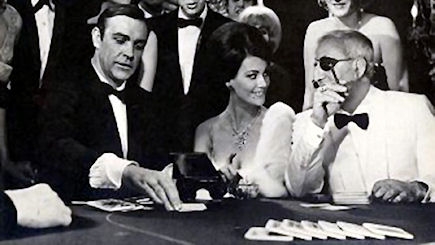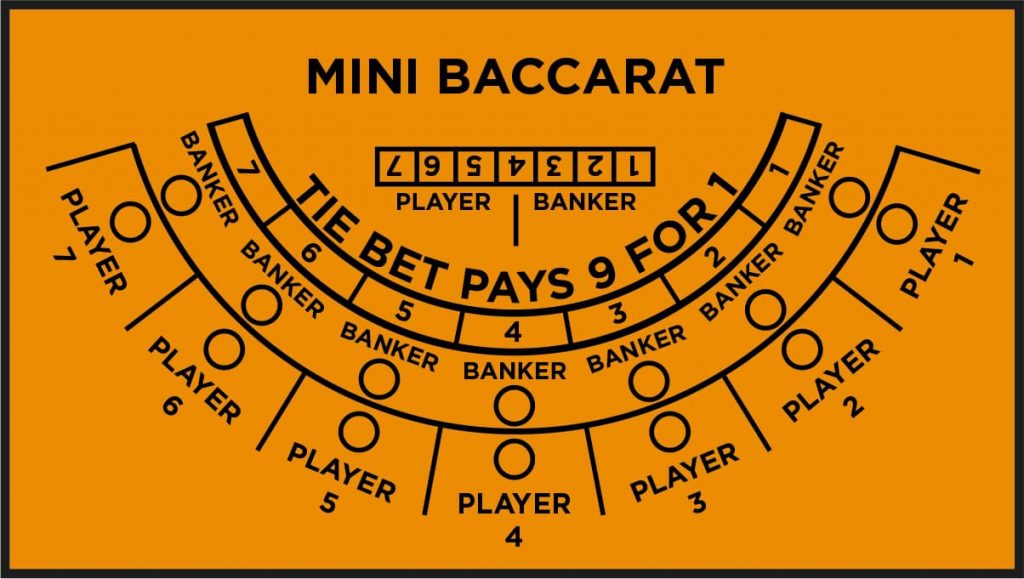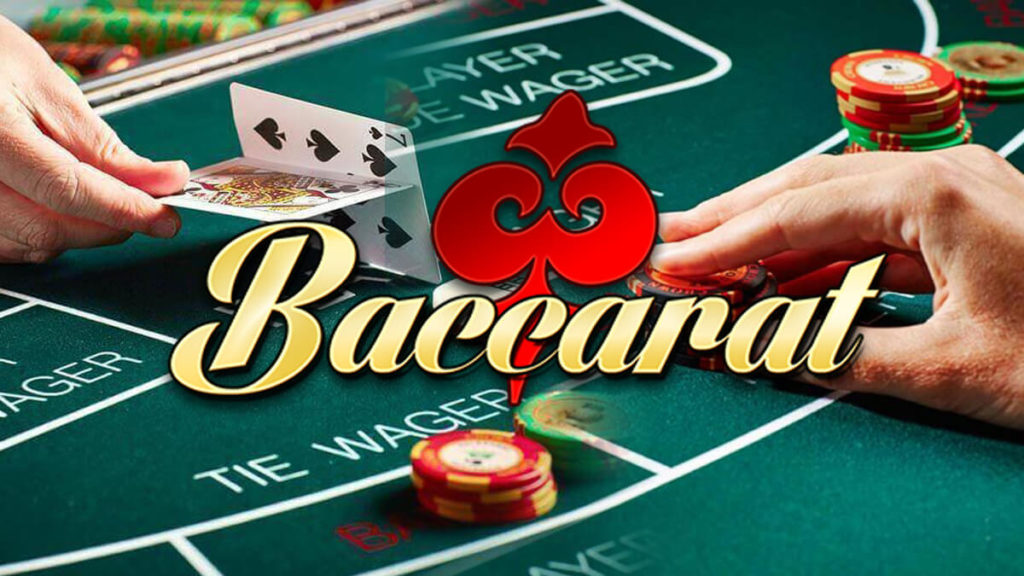Baccarat is a card game that originated in Italy in the 15th century. It is a game of chance played between two hands, the “player” and the “banker”. The objective of the game is to predict which hand will have a higher score, with the highest possible score being 9. Cards 2 through 9 are worth their face value, while 10s and face cards have a value of 0. Aces have a value of 1. In baccarat, the total value of a hand is the sum of the values of its cards, but only the last digit is used to determine the score. This game is popular in casinos around the world, particularly in Asia.
Baccarat History
Baccarat is a card game that has a rich history dating back to the 15th century. Its origins can be traced to Italy, where it was played by the aristocracy during the Renaissance period. The game was originally called “baccara” or “baccarat” and was later introduced to France, where it became popular among the French nobility.
In the 19th century, baccarat made its way to America, where it was initially played in exclusive private clubs. Over time, the game became more widely available, and it gained a reputation as a high-stakes game favored by wealthy players.
In the 20th century, baccarat became increasingly popular in casinos around the world, particularly in Asia. In Macau, baccarat accounts for a significant portion of the gaming revenue generated by casinos. Today, baccarat remains a popular casino game, with variations such as mini-baccarat and punto banco being played in casinos around the world.

How to play Baccarat
Baccarat is a card game that is played between a player and a banker. Here are the steps to play Baccarat:
- Place Your Bet: Before the cards are dealt, you need to place your bet on either the player’s hand, banker’s hand, or a tie. You can also bet on a combination of these options.
- Receive Your Cards: After the bets are placed, the dealer will deal two cards each to the player and banker. The value of the cards is determined as follows: Ace is worth 1, face cards and 10s are worth 0, and all other cards are worth their face value.
- Calculate Your Total: Add up the point value of your cards. If the total is more than 9, the second digit of the sum is the value of the hand. For example, if you have a 7 and a 9, your total is 6 (7+9=16, drop the first digit).
- Determine if a Third Card is Dealt: If either the player or banker has a total of 8 or 9, this is called a natural hand, and no further cards are dealt. If the player’s total is 5 or less, they can draw a third card. If the player stands, the banker will draw a third card if their total is 5 or less.
- Compare Hands: Once all cards have been dealt, the hands are compared. The hand closest to 9 wins. If the hands have the same value, it is a tie.
- Collect Your Winnings: If you bet on the winning hand, you will be paid out according to the odds of the bet. If there is a tie, bets on the player and banker are returned, and bets on a tie win.
Baccarat Variants
There are several variants of Baccarat, each with unique rules and gameplay. Here are the most popular ones:
Punto Banco
Punto Banco is a variant of Baccarat, which is a card game that has been played in casinos for centuries. The two terms are often used interchangeably, and Punto Banco is sometimes referred to as “American Baccarat.”
In traditional Baccarat, there are three possible outcomes: Player wins, Banker wins, or a tie. However, in Punto Banco, there are only two outcomes: Player wins or Banker wins. This simplifies the game and makes it easier for novice players to understand.
Another difference between Punto Banco and traditional Baccarat is the way the cards are dealt. In Baccarat, players take turns dealing the cards, while in Punto Banco, the dealer is responsible for dealing all the cards. Additionally, in Punto Banco, the players do not have the option to take additional cards or make any decisions during the game, as all the rules for drawing additional cards are predetermined. Despite these differences, both Baccarat and Punto Banco share many similarities. Both games involve betting on which hand will have a higher value, and both use the same card values and scoring system. In both games, the object is to have a hand with a total value as close to nine as possible.
Chemin de Fer
Chemin de Fer is a variant of the card game Baccarat that originated in France. The name “Chemin de Fer” means “railway” in French, and the game was reportedly popular among railway workers in the 19th century.
In Chemin de Fer, the players themselves act as the banker, taking turns to deal the cards and accepting bets from the other players. The role of the banker rotates clockwise around the table, and each player in turn has the option to be the banker or pass. Unlike in other variants of Baccarat, such as Punto Banco, the players in Chemin de Fer have more control over the game and can make decisions about whether to draw an additional card or stand based on the value of their hand.
The objective of the game is to have a hand with a total value as close to nine as possible. The card values are the same as in Punto Banco and other variants of Baccarat, with aces worth one point, face cards and tens worth zero points, and all other cards worth their face value. After the players have placed their bets, the banker deals two cards to each player, as well as two cards to themselves. If either the player or banker has a natural hand (a hand with a total value of eight or nine), no additional cards are drawn. If neither has a natural hand, the player has the option to draw a third card based on specific rules.
Baccarat Banque
Baccarat Banque is a variation of Baccarat that is similar to Chemin de Fer. The name “banque” refers to the banker in the game, who is responsible for dealing the cards and accepting bets from the players.
In Baccarat Banque, the role of the banker is fixed and does not rotate among the players. The banker is typically the player who is willing to bet the largest amount of money. The other players at the table take turns to play against the banker, placing their bets on either the banker’s hand or the player’s hand. The objective of the game is the same as in other variants of Baccarat – to have a hand with a total value as close to nine as possible.
The card values and scoring system are also the same as in other versions of the game. After the players have placed their bets, the banker deals two cards to each player and two cards to themselves. If either the player or the banker has a natural hand (a hand with a total value of eight or nine), no additional cards are drawn. If neither has a natural hand, the player has the option to draw a third card based on specific rules.
Mini-Baccarat

Mini-Baccarat is a simplified version of the traditional Baccarat game, designed to be faster and easier to play. It is typically played on a smaller table, and the rules are simplified to make the game more accessible to a wider audience.
In Mini-Baccarat, the dealer handles all the cards, and the players do not have the option to handle the cards or make any decisions about the game. The rules for drawing additional cards are predetermined, and the game progresses quickly, with each hand taking only a few seconds to complete. The objective of the game is the same as in other versions of Baccarat – to have a hand with a total value as close to nine as possible. The card values and scoring system are also the same as in other versions of the game.
In Mini-Baccarat, there are typically only two possible outcomes – either the player wins or the banker wins. If the player’s hand has a higher value than the banker’s hand, the player wins. If the banker’s hand has a higher value than the player’s hand, the banker wins. One notable difference in Mini-Baccarat is that the game is played with fewer decks of cards than in traditional Baccarat. This reduces the likelihood of ties and makes the game faster-paced.
EZ Baccarat
In EZ Baccarat, the same rules and gameplay as in traditional Baccarat are used, with some minor differences. The objective of the game is still to have a hand with a total value as close to nine as possible, and the card values and scoring system are also the same.
However, in EZ Baccarat, the game uses a special rule known as the “Dragon 7” or “Panda 8” rule. This rule is used to eliminate the need for commission fees on winning banker bets. Under the Dragon 7 rule, if the banker’s hand wins with a total of seven consisting of three cards, the banker bet is paid out at 40 to 1 odds. Similarly, under the Panda 8 rule, if the player’s hand wins with a total of eight consisting of three cards, the player bet is paid out at 25 to 1 odds. These bonus payouts are made without charging the traditional 5% commission fee that is typically charged on winning banker bets in traditional Baccarat games. This can be attractive to players, as it offers the potential for larger payouts without the additional commission fees.
Super 6
Super 6 is a variation of the traditional game of Baccarat that is played with slightly different rules and a different payout structure. In this game, players can bet on either the banker’s hand, the player’s hand, or a tie.
The objective of the game is still to have a hand with a total value as close to nine as possible, and the card values and scoring system are also the same as in traditional Baccarat. One of the key differences in Super 6 is that if the banker wins with a total of six, half of the bet placed on the banker is paid out at even money (1:1) and half of the bet is returned to the player. This is different from traditional Baccarat, where the banker bet is paid out at even money minus a 5% commission fee.
The Super 6 game also has a different payout structure for the tie bet. In traditional Baccarat, a tie bet typically pays out at 8:1 odds, while in Super 6, a tie bet pays out at 12:1 odds. This can make the game more attractive to players who enjoy the potential for larger payouts.

Baccarat Strategies
Baccarat is a popular card game that is played in many casinos around the world. The game is simple, and the objective is to bet on the hand that will have a higher total value, either the players or the bankers. While Baccarat is a game of chance, there are several strategies that players can use to increase their chances of winning. Here are some of the most popular Baccarat strategies:
The Martingale System
The Martingale Strategy is one of the most popular betting strategies in Baccarat. The idea behind this strategy is to double your bet after every loss, with the aim of recovering your losses and making a profit when you eventually win.
For example, if you bet $10 and lose, you would then bet $20 on the next hand. If you lose again, you would bet $40 on the next hand, and so on. The idea is that when you eventually win a hand, the payout will be enough to cover your previous losses and leave you with a profit.
While the Martingale Strategy can be effective in theory, it is important to note that it requires a significant bankroll and that there is always the risk of hitting the table limit or running out of funds before you win a hand.
The Fibonacci System
The Fibonacci Strategy is a betting strategy that is based on the Fibonacci sequence of numbers. In this strategy, you bet according to the Fibonacci sequence, increasing your bet after a loss and decreasing your bet after a win.
For example, if you start with a bet of $10 and lose, your next bet would be $10 again. If you lose again, your next bet would be $20 (which is the sum of the previous two bets). If you lose again, your next bet would be $30, and so on.
The idea behind this strategy is that losses are eventually recouped by larger wins, and that the Fibonacci sequence can be used to calculate the optimal bet sizes based on the previous outcomes of the game.
The Paroli System
The Paroli Strategy is another popular betting strategy in Baccarat. This strategy involves increasing your bet after a win, with the aim of capitalizing on winning streaks and maximizing your profits.
For example, if you bet $10 and win, you would then bet $20 on the next hand. If you win again, you would then bet $40 on the next hand, and so on. The idea is that you can ride a winning streak to maximize your profits while minimizing your losses.
Like the Martingale Strategy, the Paroli Strategy can be effective in theory, but it also requires a significant bankroll and carries the risk of hitting the table limit or losing your funds before you can capitalize on a winning streak.
The 1-3-2-4 System
The 1-3-2-4 Strategy is a betting strategy that involves placing a series of bets according to a specific sequence. In this strategy, you start by placing a bet of 1 unit, then 3 units, then 2 units, and then 4 units.
For example, if your starting bet is $10, you would bet $10 on the first hand, $30 on the second hand, $20 on the third hand, and $40 on the fourth hand. The idea behind this strategy is that you can maximize your profits while minimizing your losses by capitalizing on winning streaks and minimizing the impact of losing streaks.
Additional Baccarat Tips
Here are some tips for playing this game:
- Bet on the banker’s hand: The banker’s hand has a slightly higher chance of winning than the player’s hand. However, keep in mind that there is a 5% commission on banker bets, so you will need to win more than half of your banker bets to make a profit.
- Avoid betting on a tie: Although a tie bet pays out at 8 to 1 odds, the odds of a tie occurring are relatively low. It’s generally best to stick to betting on the player or banker’s hand.
- Manage your bankroll: As with any casino game, it’s important to manage your bankroll carefully. Set a budget for yourself and stick to it. Don’t chase your losses by increasing your bets, as this can quickly deplete your bankroll.
- Practice good money management: One popular money management strategy is to increase your bet after a win and decrease your bet after a loss. This can help you maximize your winnings while minimizing your losses.
- Understand the rules: Baccarat is a simple game, but it’s important to understand the rules and the different betting options. Make sure you understand when a third card is drawn and how the dealer controls the player and banker’s hands.
The Future of Baccarat
The future of these games looks promising, as the game continues to be popular among casino players worldwide. This game has a long history and has proven to be a timeless classic that has stood the test of time.
One of the reasons for baccarat’s continued popularity is its simplicity. The game is easy to learn and play, making it accessible to players of all skill levels. Additionally, baccarat has a relatively low house edge, which means that players have a reasonable chance of winning.
Another factor that could contribute to the future success of baccarat is the growing popularity of online gambling. With the rise of online casinos, players can now enjoy baccarat from the comfort of their own homes. Online casinos also offer a wide range of baccarat variants and betting options, making it easy for players to find a game that suits their preferences.
In conclusion, the future of baccarat games looks bright, as the game continues to be popular among casino players and adapts to the changing landscape of online gambling. As long as baccarat continues to offer an enjoyable and accessible gaming experience, it is likely to remain a staple of casino gaming for years to come.
FAQ
Conclusion
In conclusion, baccarat is a popular casino game that is primarily based on luck. However, there are still strategies that can be used to improve your chances of winning. While it may be associated with high rollers and a glamorous image, baccarat can be played by players of all budgets. It’s important to note that the house edge can vary depending on the type of bet you make, with the banker bet having the lowest house edge. With online versions of the game readily available, baccarat remains a popular choice among casino enthusiasts.
